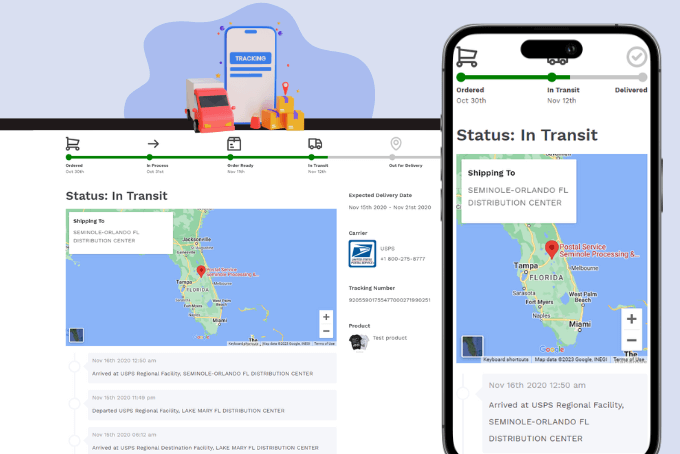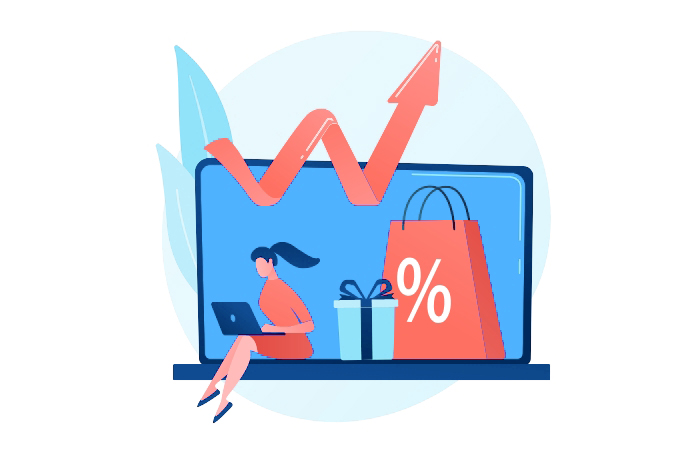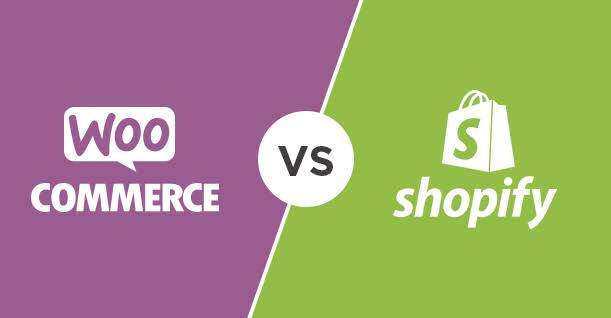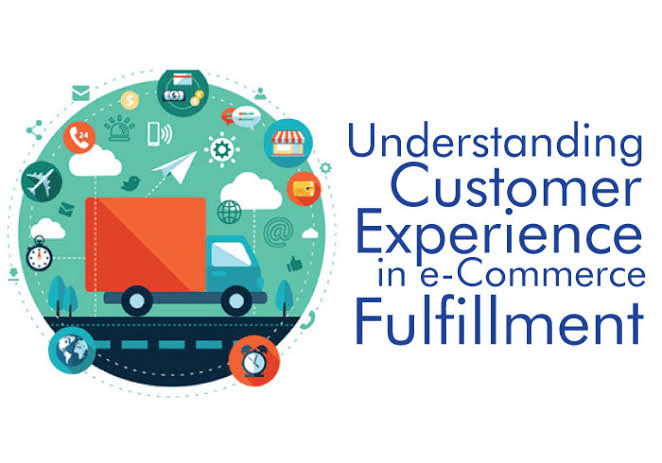Having traffic drawn to your website is not enough; turning them into buyers and boosting conversion is the end goal, but before you can regularly increase traffic to your website, you need to optimize your website to boost conversion.
Search Engine Optimization(SEO) is critical and essential for the accomplishment and growth of an e-commerce website. After all, any website has to be visible for potential buyers to shop.
If the website is not available and can't be reached during the organic search, the website will lose potential buyers and therefore have no boost in conversion.
To rank high during any organic search using the search engine, the e-commerce website has to be optimized consequently.
Even though it does not depend on the kind of online shopping or website you possess, there are various ways to influence your e-commerce SEO and optimize your website.
If you want to know how to increase traffic to your website and convert them to buyers using eCommerce SEO, this write-up is for you.

What Is Ecommerce SEO?
Search engine optimization for online stores is known as E-commerce SEO. An example of optimization is writing lengthy descriptions with pertinent keywords on each product page. Getting backlinks from pertinent websites can help your online store rank better.
Depending on the sort of website and online shopping you have, there are three different forms of e-commerce SEO. :
- On-page SEO: This refers to anything on your website's pages, such as blogs, product copy, and web copy.
- Off-page SEO: This refers to anything that occurs away from your website that aids your SEO strategy, such as backlinks.
- Technical SEO: This entails anything technical done to improve search rankings, such as site indexing to aid bot crawling.
Ecommerce SEO Considerations
Ranking an online store's website requires more complexity compared to ranking websites for other types of businesses.
Ecommerce shops must rank a ton of product pages, frequently with similar content, and manage optimization across a big inventory of pages; blogs and service websites typically have the advantage of having extremely original content with less risk of cannibalization.
When optimizing an e-commerce website, there are several unique considerations to make, even if the ranking elements are mostly the same.
Broken links are common in e-commerce shops.
As products go out of stock or out of season, the go-to is usually to pull the page from the site. But this can result in broken links - or “404” pages. This can create a poor user experience, misdirect Google bots to broken links, and make managing your content a massive task.
It is common to create poor-quality content.
Many webmasters of e-commerce sites provide product pages that include a picture, a description of the item, a price, and maybe some purchasing details. If you do this across dozens of pages or more, you can encounter problems with low-quality content. Google cannot distinguish between one product page and another since there is not enough context.
Since the Panda algorithm change, Google has placed a greater emphasis on the quality of the material. Due to this, eCommerce companies must pay particular attention to the value that their content offers and how different it is from other pages.
Duplicate metadata is a problem on many e-commerce platforms.
Duplicate metadata, such as page titles and descriptions, are frequent on e-commerce websites, especially when new pages are generated automatically or utilizing templates. Some e-commerce websites copy the names and descriptions of other products' pages whenever a new page is generated. Both users and search engines find this puzzling.
Every page should have a distinct title and description when using SEO for e-commerce. While some platforms let you do this automatically (for instance, "Product Name - Type - Brand"), others demand a manual override. Although it could be difficult, the effort is worthwhile.
Ways To Enhance Your E-commerce SEO
Whether you are just starting your website or you have been at it for a while, the following e-commerce SEO tips will help to generate an organic search, create traffic, and boost conversions.
Make Your Product Images More Appealing To Search Engines And Customers

Just as people must see the food they would like to order, so is it important that buyers see the product they want to order from all perspectives( just the way it is).
Using unappealing and low-quality product images is something you must avoid on your e-commerce site. It is proven that images have a way of capturing people's attention, and they are an outstanding SEO tool for any type of e-commerce site.
The first step of the image optimization is to upload images in high quality with nothing bigger than 100 KB. If it is bigger than that, buyers might get frustrated with the slow loading speed of the website.
The second step is to add a text or message that is relevant and best describes the product. The name and the product must be the same.
Conduct Keyword Research To Identify The Best Keywords For You.

An eCommerce SEO tip comes with recognizing relevant keywords that pop up during any organic search and making them available on your eCommerce website.
It depends on what you sell and what you want to be ranked for. It is necessary to be aware of lots of competition, and many eCommerce sites might always go for common terms. You would like to stand out and be searchable.
To do that, make sure you check out long-tail keywords. You could use the Google Keyword Planner, an SEO tool. This helps you to know how competitive the target keywords you have selected are.
Nevertheless, your main goal in setting up an eCommerce SEO and having a good ranking for relevant keywords is to optimize your descriptions, product pages, product names, and product categories.
Boost Your Website's Speed

To get more organic search, rankings, and e-commerce website traffic, leading to improved conversions, there must be an improvement in your website's loading speed.
Use these tips to improve your e-commerce website's loading speed:
- Carefully choose your hosting website service carefully.
- Avoid any unnecessary plug-ins.
- Avoid large file sizes and remove unnecessary codes.
- Optimize your product images and make use of plugins to save your e-commerce site on users' browsers.
- Remove ads that don't display and slow down the speed of your e-commerce website.
- Google’s PageSpeed Insights can be used to check the speed of your e-commerce website.
Ensure You Make Use Of Structured Data On Your eCommerce Site
This structured data enhances your e-commerce SEO in such a way that it helps users get the information they need pretty fast about your website and the products you offer as it appears in the search engine. This is a better way to boost conversions and generate more sales.
You could ask a developer for guides to help you with the codes and ways to go about it if you are not technologically astute enough.
Then you can display the number of reviews, star rating, and price to enable a better customer-user and friendly experience.
Optimize Your URL Configuration

One of the main factors in enhancing your e-commerce SEO and customers' experience is URL. They increase your ranking page when searched for on search engines and also let site guests have a clue about what the link is all about.
It would also drive more customers to your products and boost conversion. A good URL must have relevant keywords and be short and precise with a few numbers.
In addition, a good URL helps in increasing traffic to your e-commerce site, increasing rankings, better e-commerce SEO, and improving your site.
A good example of a product page featuring Blue Wood Scent Oil looks like this:
"yourwebsite.com/scentoil/blue-wooden-scentoiluser".
Optimize Your Website For Mobile
Mobile devices accounted for more than 50% of global website traffic in 2021. This means mobile devices are important and help to improve sales on e-commerce websites. It is worth optimizing your e-commerce website for mobile.
Most importantly, your e-commerce website should automatically fit any of the user's screen types; which could be either mobile or desktop.
Follow these tips:
- Ensure the contents displayed on the e-commerce website can be displayed on the mobile phone.
- Both mobile and desktop users should have the same user experience.
- All displays, like videos, images, and texts, are displayed correctly and also load fast, like on the desktop.
Focus On Link Building
Link building is one of the great eCommerce SEO tips. This link building brings referral traffic, boosts conversions, and brings more sales.
With other e-commerce websites linked to you, it shows your website is relevant and has unique content.
To get more backlinks, you can offer other websites guest posts and hig
h-quality content, and also solve users' problems by answering their questions. People like this kind of content, and other high-quality websites will also want to link up.
Avoid Duplicate Content

Always try to come up with unique content. This will increase your e-commerce SEO and ranking.
Don't use similar descriptions for multiple products on your website; use different descriptions. In addition, for products you resell from the manufacturer, always come up with your unique description as well; don't copy and paste.
Do Internal Linking Right

Internal Linking helps eCommerce SEO. When you send internal links to your products and category pages either through your blog or articles, it shows Google how relevant your pages are, which boosts conversion and showcases relevant new products to customers. You can get it from the backlinks of high-quality websites.
How To Assess The Success Of Your eCommerce SEO Strategies
To know the success of your e-commerce SEO, you need to monitor your website's success, progress, and results so you can boost conversions, increase organic search, and drive more traffic to your e-commerce website.
Tools like Google Search Console and Google Analytics are used for assessment. The Google Search Console helps to track the performance of your URLs, check the CTR of your product pages, check the questions that drive the most organic search and traffic to your eCommerce website, and more.
Google Analytics helps to know where referral traffic is coming from, converting relevant keywords, good quality content, conversion from organic search, and more.
Conclusion
In a world of revolving and competitive technological advancement, e-commerce SEO is an effective tool to increase traffic to your e-commerce website and generate tremendous sales.
However, to effectively boost conversion, result-oriented organic search, and enhance the high ranking of your e-commerce website, make a commitment to follow the steps highlighted above, which will help you achieve better e-commerce SEO for your online store.











![Top 10 Narvar Alternatives & Competitors [2025]](https://blog.parcelpanel.com/wp-content/uploads/2025/10/AfterShip-Altenatives-6.png)
![Top 10 Corso Alternatives & Competitors [2025]](https://blog.parcelpanel.com/wp-content/uploads/2025/10/AfterShip-Altenatives-5.png)
















